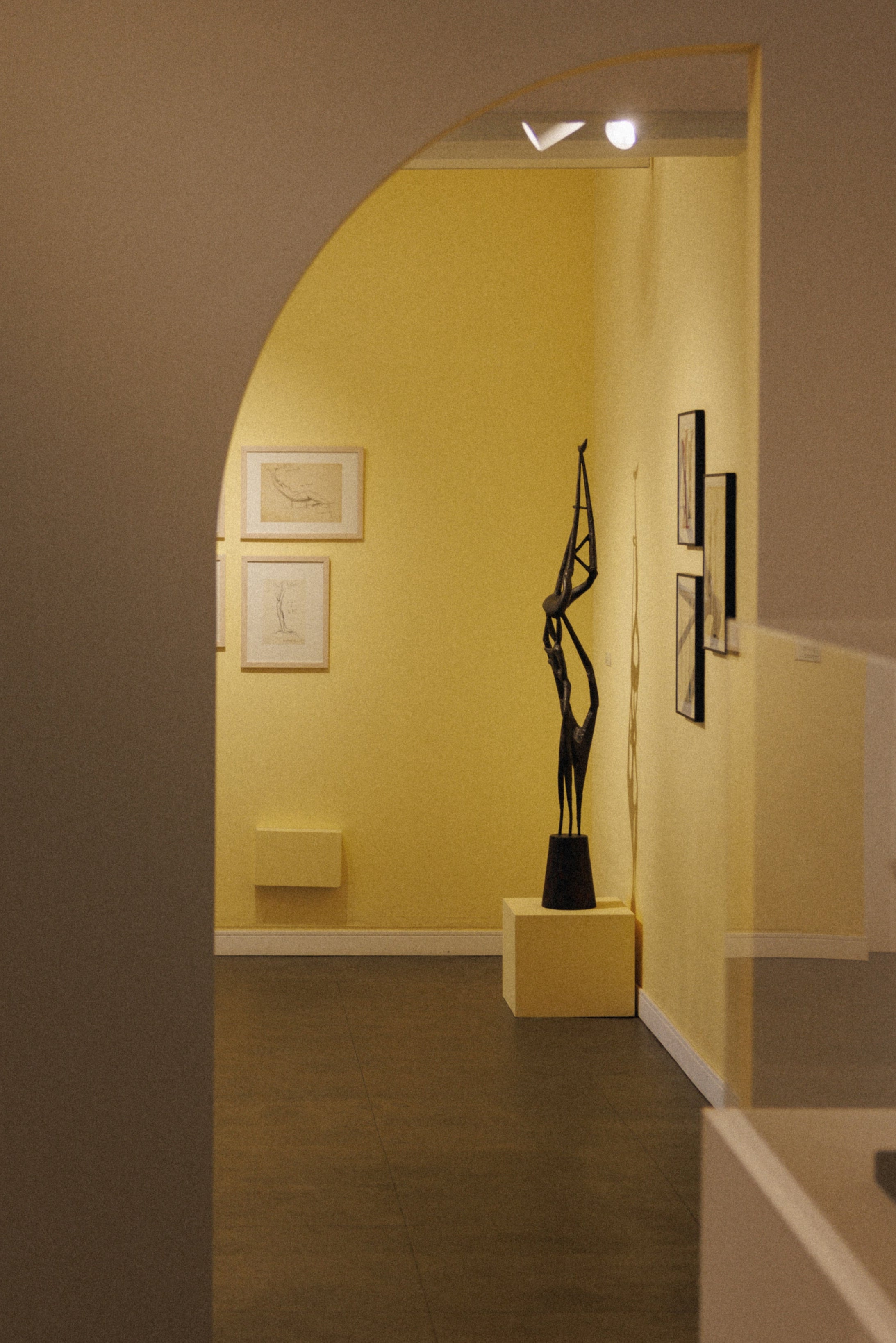CHOI MAN LIN MUSEUM
23, Solsaem-ro 7-gil, Seongbuk-gu, Seoul
As you ascend the winding hillside road of Pyeongchang-dong in Seoul, the red brick facade of the Choi Man-rin Art Museum comes into view. This museum was once the living and working space of Choi Man-rin (1935–2020), a first-generation sculptor who laid the foundation for Korean abstract sculpture. In 2020, Seongbuk-gu transformed the site into a museum. Imbued with the layers of the artist’s time, the space goes beyond mere retrospection, serving as a contemplative place that traces his lifelong exploration of existence, nature, and the passage of time through sculpture.

Choi Man-rin lived through the Japanese colonial period, the Korean War, and the process of industrialization, expressing his questions about human existence through the medium of sculpture. Working with solid materials such as bronze, granite, and brass, he created forms imbued with curves, negative space, weight, and balance, opening new horizons in sculptural language. At a time when the concept of sculpture was still vague in Korea, he led a radical and dedicated life, laying the foundations for art education and Korean-style sculpture.


The museum spatially reflects the artist’s daily life. Passing through the arched gate and entering the interior, visitors encounter the repeated architectural structure throughout the exhibition spaces, naturally guiding the flow of viewing. The spacious wooden staircase connecting the first and second floors, the building’s framework, and the wood-finished ceiling—all preserved from Choi Man-rin’s former residence—create an exhibition environment that allows visitors to follow the traces and pathways of the artist’s life alongside his works.




Inside the museum, a comprehensive collection of Choi Man-rin’s works is displayed, reflecting the evolution of his art throughout his life. Among these, the early series titled Eve stands out. Created during times of plunder and war, these works reveal the artist’s close observation of life and death, exploring human essence and vitality through irregular human forms. This series serves as a key to understanding the evolution of his sculptural language. In addition to his works, visitors can experience unique and exploratory exhibitions by various artists whose practices are rooted in sculpture. One corner of the exhibition space features not only Choi Man-rin’s sculptures but also his drawings, work sketches, and interview videos, offering a multidimensional insight into the artist’s creative world.



In the outdoor garden, the red brick exterior walls of the building contrast strikingly with the lush green leaves, creating a unique visual atmosphere. Beneath the shade of the trees, a serene central pond quietly flows, surrounded by sculptures naturally arranged to offer an immersive experience that follows the artist’s perspective and intent. Interspersed throughout the garden are the series Mac (脈), Tae (胎), and O, which reflect the expansion of the artist’s worldview since the 1970s. These works mark a shift from focusing on form to emphasizing essence, exploring nature and cosmic order that embrace humanity. After viewing Eve, stepping out into the outdoor garden reveals this transformation even more starkly, allowing visitors to visually experience the clear contrast in the artist’s approach between his early and later works.


This place closely resembles the life of artist Choi Man-rin. Within a structure where curves and straight lines, natural and artificial elements, sharpness and softness coexist, the sculptural language he developed throughout his lifetime permeates every corner of the space. Just as his carving tools are displayed in one corner, the artist’s life itself is preserved as a work of art, inviting visitors to slowly explore and appreciate it.

